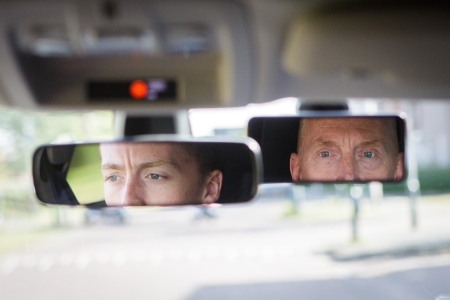In the Netherlands, no studies of the crash risk effects of (the quality of) driver training have been done (the number of crashes across covered distances). But in 2013, the Dutch driver training system was compared to that in our neighbouring countries (Germany, Belgium and the United Kingdom). This showed that the type of driver training system did not have a marked effect on road safety (measured in number of casualties). The four countries do, however, show large differences in driver training. Germany has a strict set of rules (obligatory number of theory lessons and driving lessons with a qualified driving instructor), whereas the United Kingdom only has few rules (with a provisional licence, learners may drive on public roads before any theory test or practical driving test has been taken, provided they are accompanied by adults). Yet, marked differences in ‘safety outcomes’ are not apparent, measured in the share of young drivers involved in crashes. None of the countries compared pays a great deal of attention to higher-order skills, such as hazard or risk perception, risk acceptance and self-reflection [6].
In some countries, prospective drivers may choose to take driving lessons at registered driving schools or to be mentored by laypersons (usually a parent). This makes comparison of both groups possible. Research in these countries has shown no difference in crash risk between both groups in the first few years after licence acquisition [7] [8] [9] [10]. A cautionary note that should be made here is that people in these countries make their own choices for driver training schools or accompaniment by laypersons. This precludes straight comparison. People choosing mentoring by laypersons could have more talent or be more motivated to learn to drive than their peers choosing driver training schools. Thus it seems that Finnish candidates from families higher up the social-economic scale more often choose mentoring by laypersons (Hatakka, 1998 as mentioned in [11]). This may lead to bias. However, a few randomized controlled trials (RCTs) have been carried out which randomly allocated test subjects to either of the abovementioned groups. These RCTs did not show a difference in crash risk between both groups either [12].In their meta-analysis of the effectiveness of basic driver trainer in preparation for a driving test, Elvik et al [8] note that the methodologically superior studies show no difference at all. In Denmark, an effect has been found after a thorough change in the national curriculum [13] and in Nebraska in the US, after the introduction of a basic training course [14], but these studies were done without any control groups and should therefore be characterized as methodologically less sound.
That basic driver training has little to no effect on crash risk may be explained by the fact that this training is primarily about vehicle control and safe traffic participation in ordinary traffic conditions. It is to be expected that learners will perform these tasks better when trained by a qualified driving instructor than when they are trained by laypersons. Yet, technically competent drivers are not necessarily safe drivers. Foreign in-depth research has shown that for most crashes in which young novice drivers are involved, a lack of hazard perception, distraction and driving at high speeds that are not appropriate to the circumstances play an important role [3] [4]. Inadequate vehicle control seldom causes crashes.
